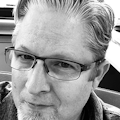AI's role in Kaizen, Lean, technology and continuous improvement
Leadership consultant, speaker, and learning enthusiast Katie Anderson is the author of "Learning to Lead, Leading to Learn" and she’s the host of the Chain of Learning podcast.
John Dyer is the author of "The Façade of Excellence: Defining a New Normal of Leadership." With 30 years of industry experience, he is a frequent speaker on topics of leadership, continuous improvement, teamwork, and culture change.
Michael Bremer is the author of "How to Do a Gemba Walk" and "Learn to See the Invisible.” A long-time continuous improvement speaker, he works with the Association of Manufacturing Excellence leading their Excellence Award activities.
The trio spoke with Jill Jusko, executive editor at IndustryWeek, sister brand to Smart Industry, about ways to boost continuous improvement efforts in manufacturing for the coming years.
Takeaways from this podcast:
- Anderson: Kaizan isn’t only about daily continuous improvement; it’s about having self-discipline first to make changes for yourself so that you can make changes for the good.
- Dyer: Because of tariffs and the push to reshore manufacturing, labor shortages will come even more into focus and a real need will emerge to develop the workforce to a higher degree than ever before.
- Bremer: Willingness to learn is paramount, to be actively working to increase your knowledge base.
About the Podcast
Great Question: A Manufacturing Podcast offers news and information for the people who make, store, and move things and those who manage and maintain the facilities where that work gets done. Manufacturers from chemical producers to automakers to machine shops can listen for critical insights into the technologies, economic conditions, and best practices that can influence how to best run facilities to reach operational excellence.
Below is a partial transcript of this Great Question podcast:
Jill Jusko: Before we move into the Q&A, I want to set the stage a little bit. I think it's fair to say that manufacturers are facing turbulent times on a lot of fronts: supply chain constraints, trade issues, worker shortages, and new technologies that ease some processes while complicating others. And those are just a few. If there was ever a time for continuous improvement to shine, it seems like now is that time. We know that developing a workforce focused on continuous improvement leads to engaged employees and a problem-solving culture, which are, of course, the building blocks of operational excellence. What we're here to do today is discuss ideas and methods to boost your continuous improvement efforts as we move into 2025 and beyond.
Podcast: The Art of the Practical in digital transformation
So, I’m going to get started with Katie. Katie, earlier this month you wrote an article on IndustryWeek titled “The Real Meaning of Kaizen.” One of the points you make early on in that article is that too many organizations don’t fully understand what Kaizen is, or at the very least, have a very restricted view of it. Could you walk us through your definition of Kaizen and how you feel it should be practiced?
Katie Anderson: Absolutely. You know, the first time I was introduced to the word "Kaizen" was almost 20 years ago at the beginning of my continuous improvement journey when I was working in hospitals and health care systems. At that time, Kaizen was really associated with something like a week-long Kaizen event.
The concept of Kaizen can be applied to events, but there's a deeper meaning. About 10 years ago, I moved to Japan, where I met Isao Yoshino, a Toyota leader, and I wrote about him in my book “Learning to Lead, Leading to Learn.” I became very interested in what Kaizen really means in Japanese culture.
It’s not only about daily continuous improvement, which is typically what the word Kaizen is translated to in English, but when I learned about the Japanese origin of the word and the way it's written, it comes from symbols meaning "self" and "change for the good."
So, it’s really about having the self-discipline first and foremost to make changes for yourself so that you can make changes for the good.
See also: Bridging the divide: Unifying IT and OT in U.S. manufacturing
It's not something you delegate to other people or just an event you do. It’s a mindset—a way of thinking about continuous improvement for yourself, for the process, and then for the collective good every day. So, we need to move away from seeing Kaizen as something that we do and start seeing it as something we live. It also requires us to take a look at ourselves as leaders.
I know we’ll talk more about this today, but to create a continuous improvement and problem-solving culture in our organizations, it requires us to shift our behaviors and have the self-discipline to make the changes needed to create that effective continuous improvement culture.
What is your company doing about cybersecurity?
JJ: Great, we will come back and talk more about that. I’m going to jump over to John. As I mentioned earlier, the time seems right to ramp up continuous improvement efforts in 2025, given our twin issues of uncertainty and well-defined problems like the labor shortage. I guess the question is: I made that as a statement, but do you agree with that? And if so, how would you address that in 2025?
John Dyer: I think we have a lot of turmoil ahead of us for a number of reasons. As we mentioned earlier, this week the big discussion and debate is how tariffs will impact the economic flow of goods around the world. There may be a strong desire for more U.S. manufacturers to start bringing more business or work back into the U.S.
The problem with that is that we’re already experiencing labor shortages, especially as it relates to skilled labor—machinists, welders, even good assemblers, and people who can run robotics. So, I think there’s going to be a real need to develop our workforce to a higher level than ever before and to improve our systems to get the most capacity out of our systems than we ever have before.
Podcast: Easier-to-accomplish automation projects that bring real ROI
So, as far as where to start, I think it begins with the leaders of an organization. Leaders need to sit down together and develop a strategy to answer the question: "How do we change the way we do things?" How do we change our leadership approach? How do we spend more time on the factory floor? Michael will talk more about that—about going to the Gemba. How do we start?
I think this is something we can discuss more later, but how do we start shifting the leader’s mindset from one of managing to one of coaching? I think we need to start using the word "coaching" more and more as we move down this path of continuous improvement.
Michael Bremer: If I could just compliment that a little bit, John and Katie both talked about mindset, learning, and coaching. One of the big challenges is that getting a deep understanding of what highly effective improvement practices look like takes a very long time—a frustratingly long time. I mean, I’m an A3 guy, and I’m still learning new things as I work with people like John and Katie.
I benefit from their experiences, and that’s part of the learning process. So, the whole idea of showing some vulnerability and being willing to admit that you don’t know it all, but even more importantly, that you’re approaching all this in the spirit of learning.
To me, at the end of the day, it’s all about this willingness to learn. I don’t know everything, and there are refinements I can make to get a deeper and deeper understanding as time goes on. To improve my ability to coach—like John was talking about—I really need to be actively working to increase my knowledge base so I can stay even or maybe one step ahead of the people I’m trying to coach as we move along and make progress.
About the Author
Scott Achelpohl
Head of Content
I've come to Smart Industry after stints in business-to-business journalism covering U.S. trucking and transportation for FleetOwner, a sister website and magazine of SI’s at Endeavor Business Media, and branches of the U.S. military for Navy League of the United States. I'm a graduate of the University of Kansas and the William Allen White School of Journalism with many years of media experience inside and outside B2B journalism. I'm a wordsmith by nature, and I edit Smart Industry and report and write all kinds of news and interactive media on the digital transformation of manufacturing.

